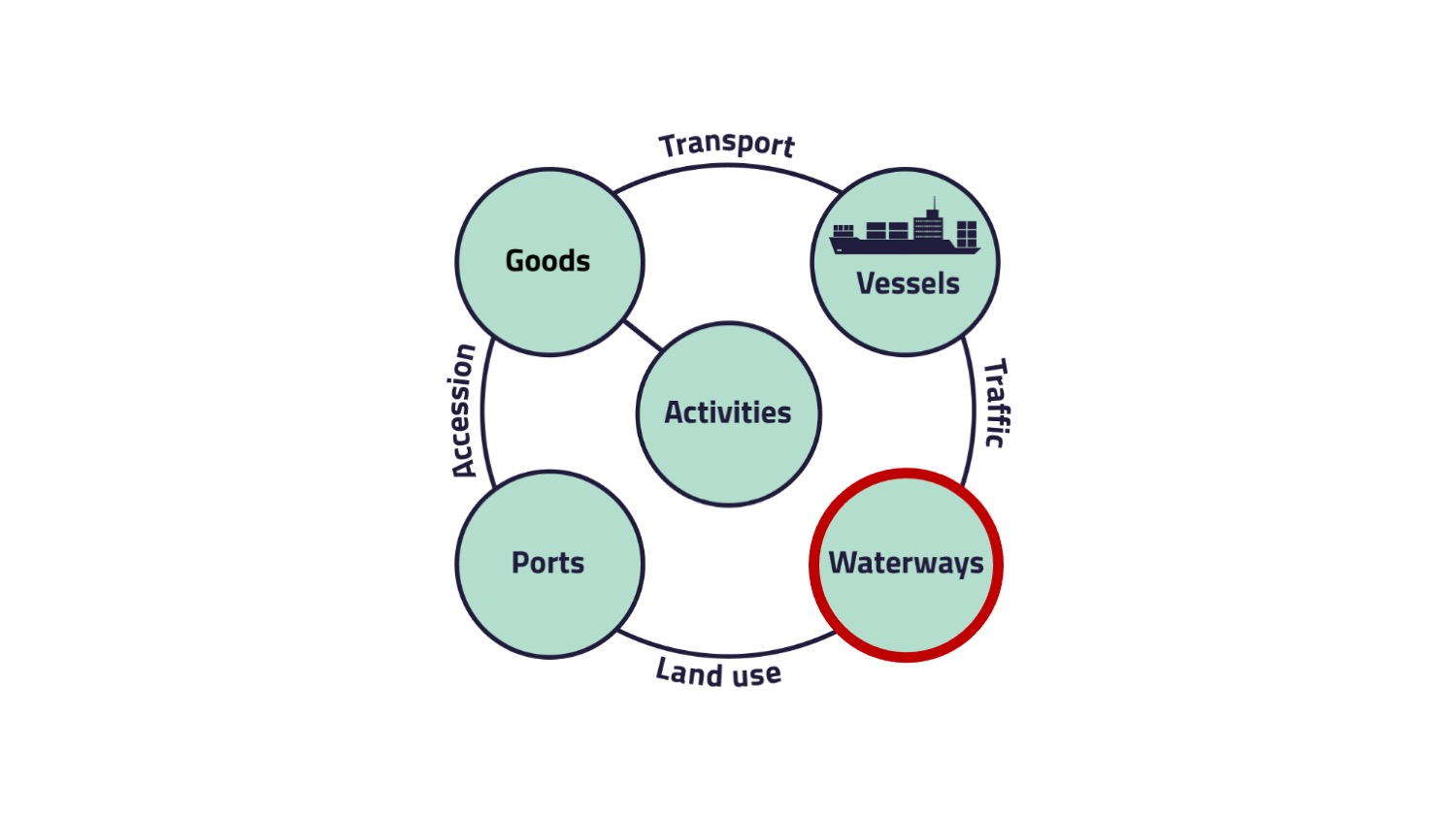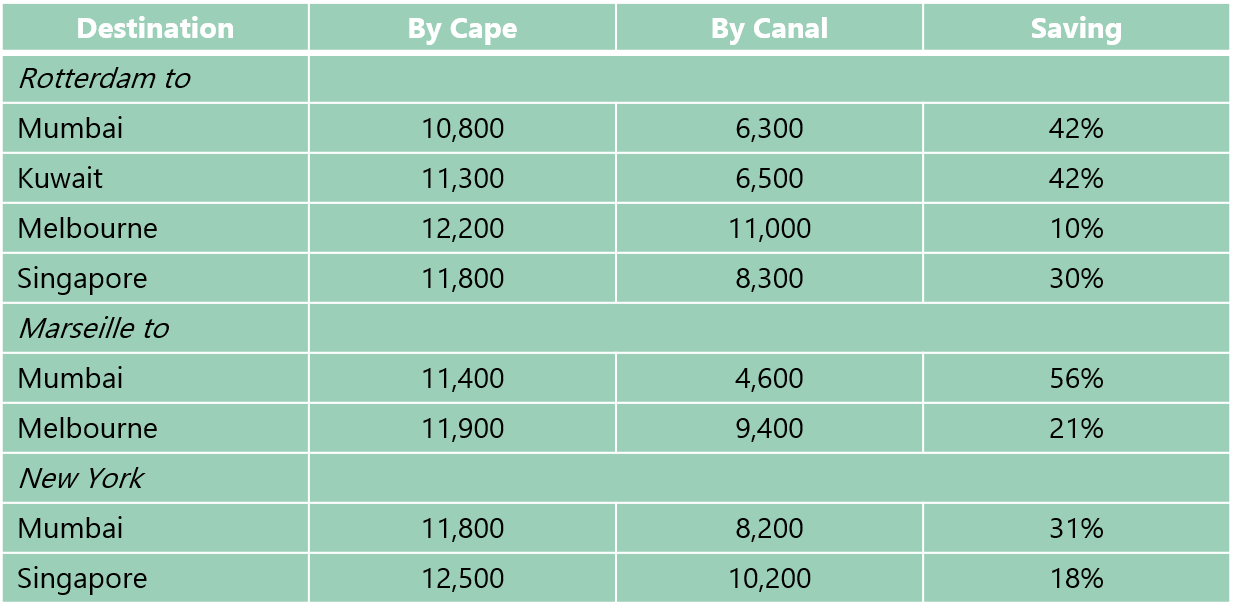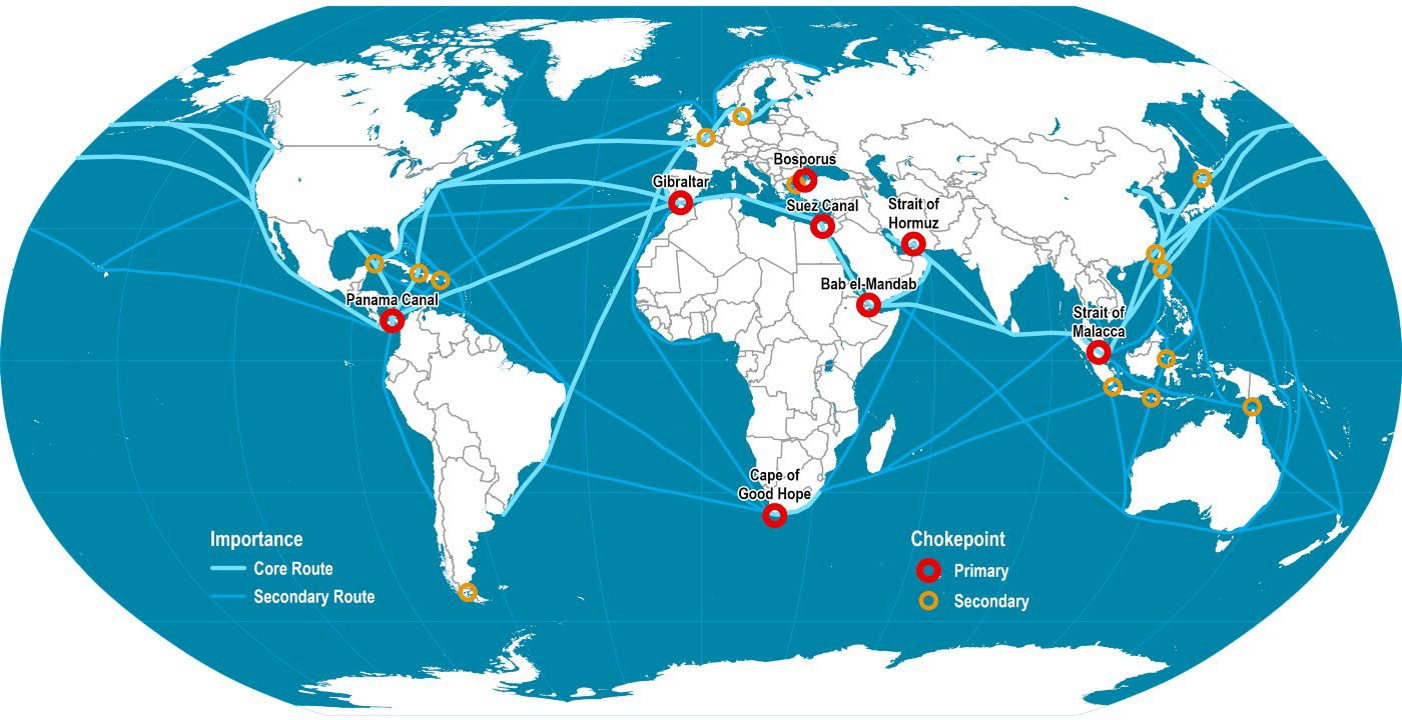Maritime Transport System
5. Waterways
The next element of the conceptual system model is called infrastructure. In case of the maritime transport system, the infrastructure is called "Waterways".

Waterways are the infrastructure, the vessels are using to travel from Port A to Port B. There are approximately 200 narrow bodies of water connecting two larger bodies of water (straits) or canals around the world. A handful of them are known as chokepoints, which means, this waterway could be blocked and stop the maritime transport by accidents or political reasons.
The following figure shows the 11 major ocean routes for global trade. On these routes, there are 8 primary chokepoints, which could limit maritime transport.
The 8 chokepoints are
- Panama Canal
- Suez Canal
- Cape of Good Hope
- Gibraltar
- Bosporus
- Strait of Hormuz
- Bab el-Mandab
- Strait of Malacca
The first two of them are canals that limit vessel sizes for passage. These limitations and important information about the two canals will be presented below.
Suez Canal
Suez Canal
Opened in 1869, the Suez Canal links the Red Sea at Suez with the Mediterranean at port Saïd, providing a much shorter route between the North of Atlantic and the Indian Ocean than the alternative route around the Cape of Good Hope.
It can accommodate vessels with beams up to 77.52 meters and draft up to 9.14 meters or beam up to 56.24 meters and draft up to 17.88 meters.
The transit takes 11-12 hours and tolls are charged in US dollars with separate rates for laden and ballast voyages.
The following table shows the saved distance by using the Suez Canal instead of the route around the Cape of Good Hope.

Panama Canal
The Panama Canal was opened in 1914 and shortens the distance from the Atlantic to the Pacific. It runs 80 km from the Atlantic at Cristobal to the Pacific at Balboa and has a transit time of 8 – 10 hours.
The old Panama Canal has a nominal draft restriction of 12.04 meters for vessels transiting the Panamax locks.
In 2007, the construction of an extension of the Panama Canal started. Since the 26th June 2016, vessels up to 15.24 meters draft can transit the Neopanamax locks.
The transit charges for the Panama Canal are based on a fixed tariff per net ton vessels transiting laden and in ballast.
The relation between waterways and ports is called land use.
Land use
Land use is the location of facilities at specific sites and is the combined result of public planning and complex market mechanisms. It may be seen as an interaction between a planned facility and infrastructure in its widest sense. This results in giving the facility a permanent address.
Seaports can be situated either directly at the sea coast but also in the inland and are accessible via rivers or seas.
Literature
Flämig, H., Sjöstedt, L., Hertel, C. (2002): Multimodal Transport: An Integrated Element for Last-Mile-Solutions? Proceedings, part 1; International Congress on Freight Transport Automation and Multimodality: Organisational and Technological Innovations. Delft, 23 & 24 May 2002. (modification of Sjöstedt 1996)
Panama Canal Authority (2022): How does it work. URL: https://pancanal.com/en/history-of-the-panama-canal/#howdoesitwork (last access: 30.03.2022).
Rodrigue, J. (2020): The geography of transport systems. Fifth edition. London, New York: Routledge.
Stopford, Martin (2008): Maritime economics. Third edition. London, New York: Routledge.
Suez Canal Authority (2015): Rules of Navigation.
Panama Canal Authority (2022): How does it work. URL: https://pancanal.com/en/history-of-the-panama-canal/#howdoesitwork (last access: 30.03.2022).
Rodrigue, J. (2020): The geography of transport systems. Fifth edition. London, New York: Routledge.
Stopford, Martin (2008): Maritime economics. Third edition. London, New York: Routledge.
Suez Canal Authority (2015): Rules of Navigation.
